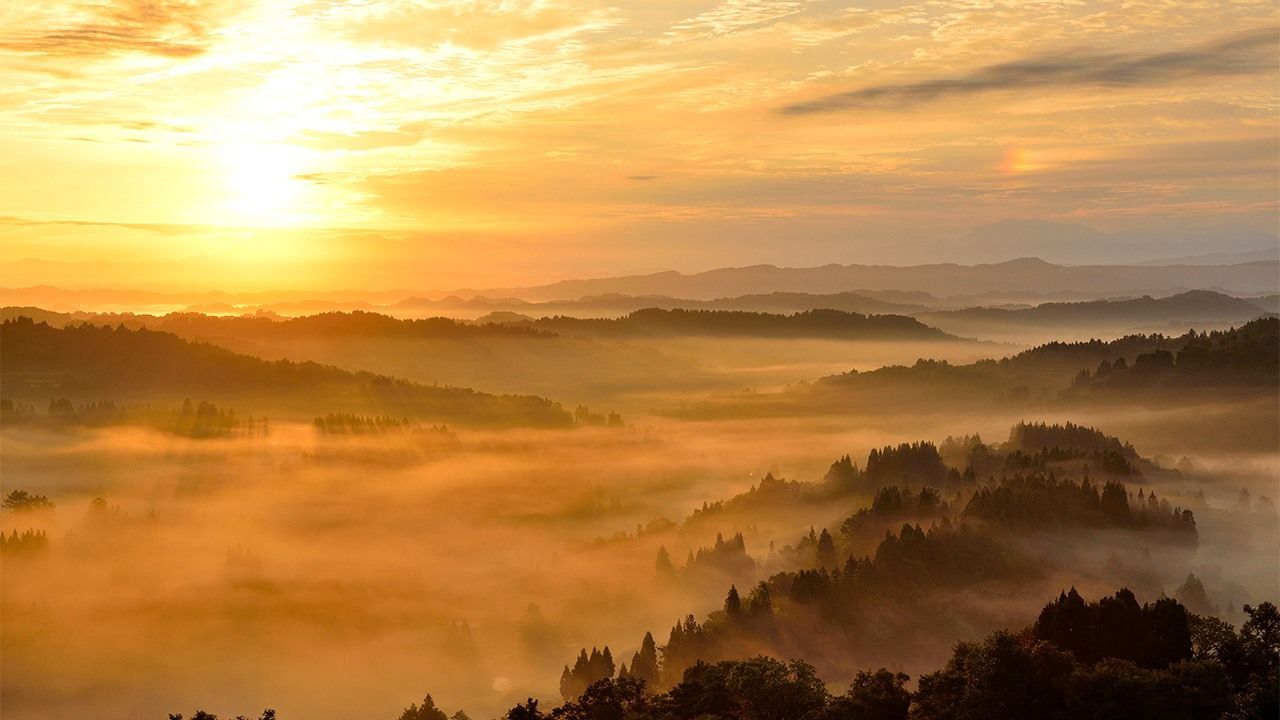
A Journey Through Japanese Haiku
The Lesser Haze of Unsung Mountains
Culture Environment Lifestyle- English
- 日本語
- 简体字
- 繁體字
- Français
- Español
- العربية
- Русский
春なれや名もなき山の薄霞 芭蕉
Haru nareya / na mo naki yama no / usugasumi
Spring’s here—
thin haze over
nameless mountains(Poem by Bashō, written in 1685.)
The preface to this poem says it was written “on the road to Nara,” so we know that Matsuo Bashō was traveling from his home province of Iga to the former capital in Yamato Province. The poem appears in Nozarashi kikō, elsewhere translated in full by Steven D. Carter as Bones Bleaching in the Fields.
Yamato had a long history as a cultural center, and past poets had written waka singing the praises of many of its mountains. The most celebrated of these was Mount Yoshino. Mibu no Tadamine, a poet of the mid-Heian era (794–1185), wrote of it: Haru tatsu to / iu bakari ni ya / mi Yoshino no / yama mo kasumite / kesa wa miyuramu (Is it only because / we say spring is come? / Fair Yoshino’s / mountains veiled this / morning in haze). This was prominent in the imperial collection Shūi wakashū, and helped establish a convention associating the beginning of spring (traditionally Risshun, in early February) with misty mountains.
Bashō turns this convention on its head, focusing instead on Yamato’s “nameless mountains.” “Spring’s here,” he tells us in this haiku. “Poems always talk about haze arriving on the illustrious Mount Yoshino as soon as spring begins, but it’s on the nameless mountains too. Even if it’s only thin haze.” The humor lies in that word “thin.” While the famous mountains have their magnificent veils, the anonymous ones just get a thin layer of haze.
(Originally published in Japanese. Banner photo © Pixta.)